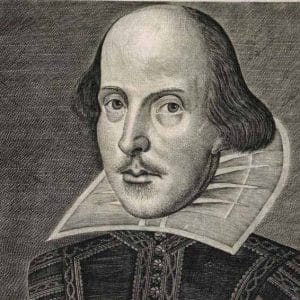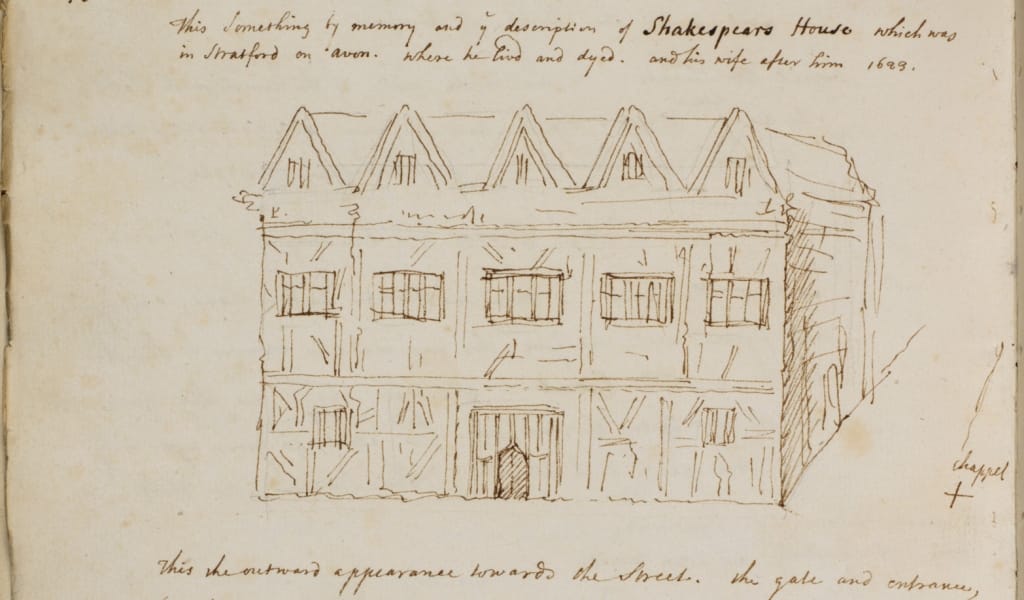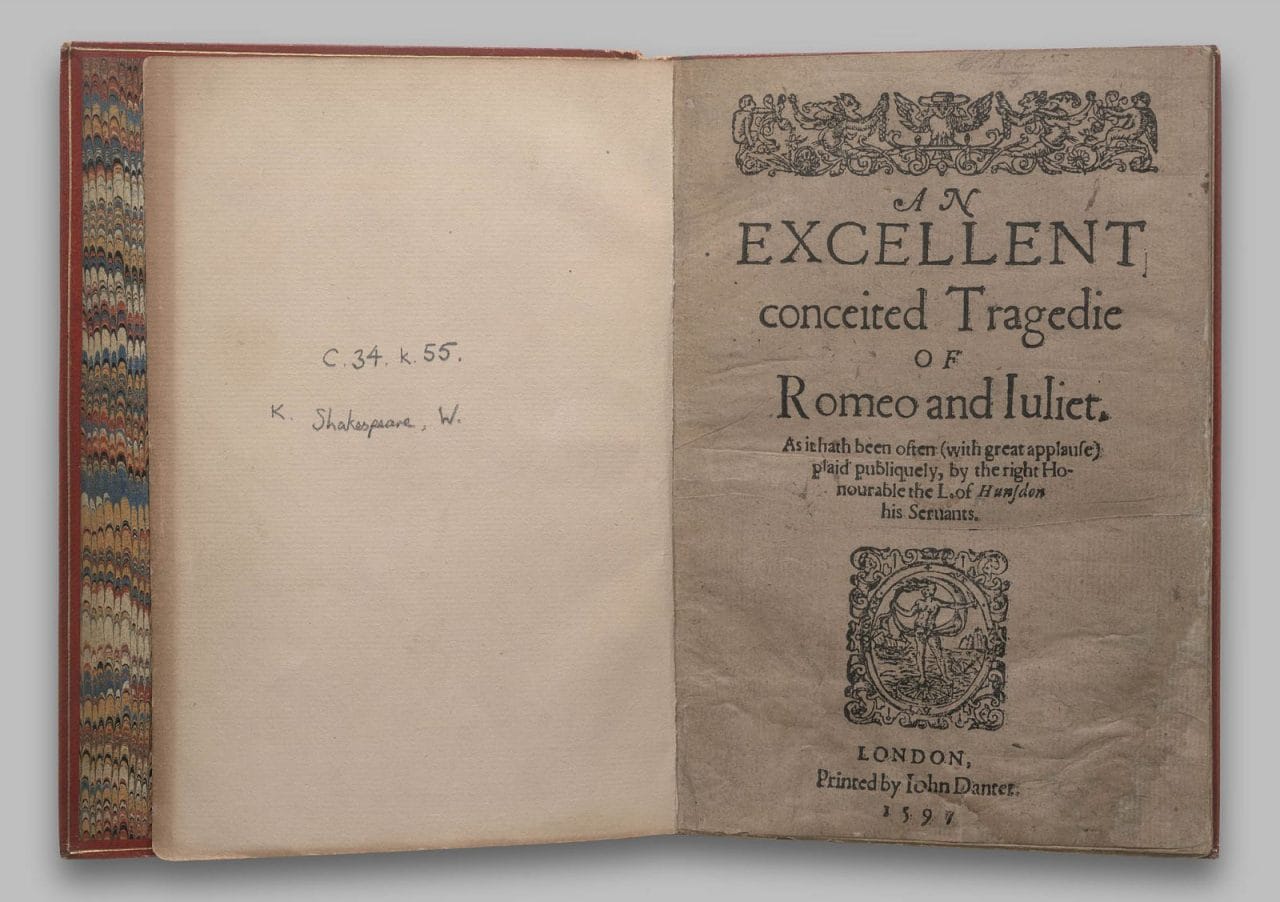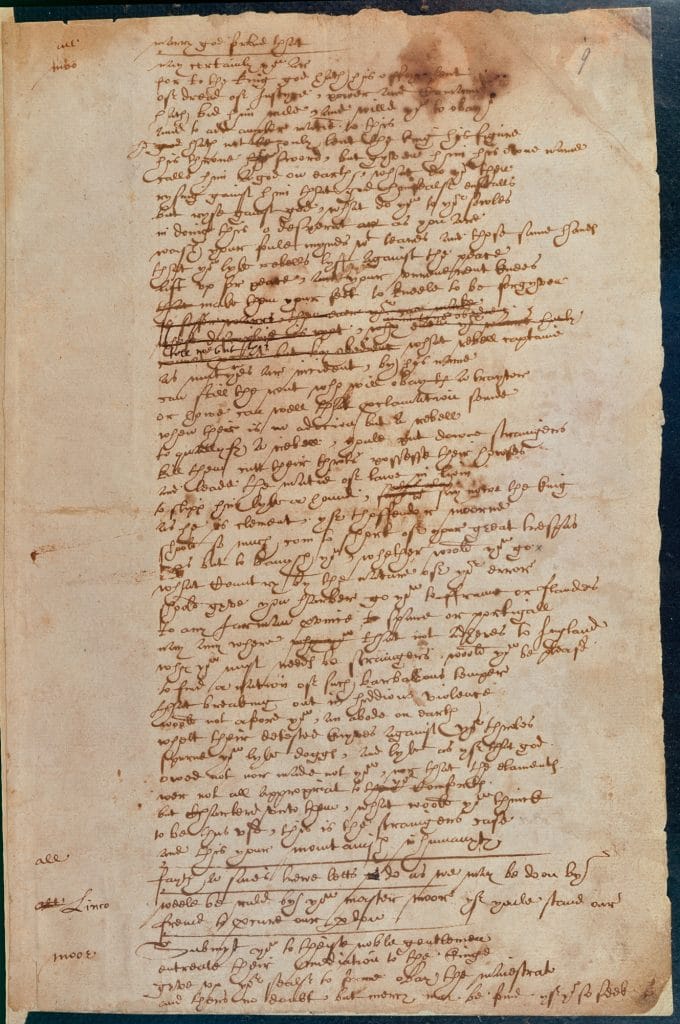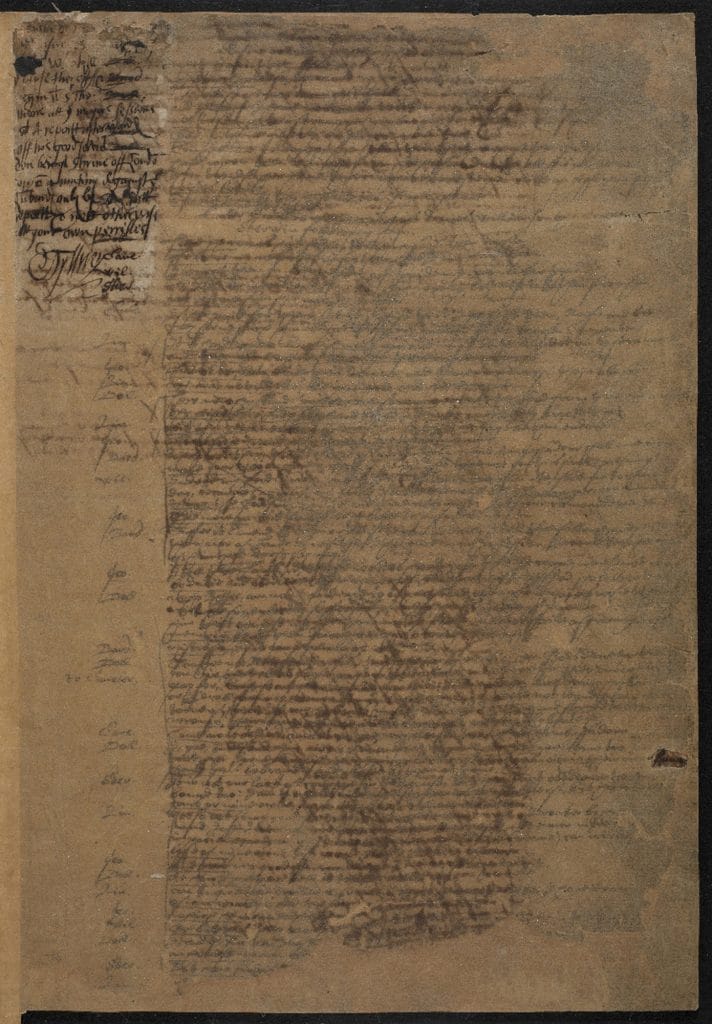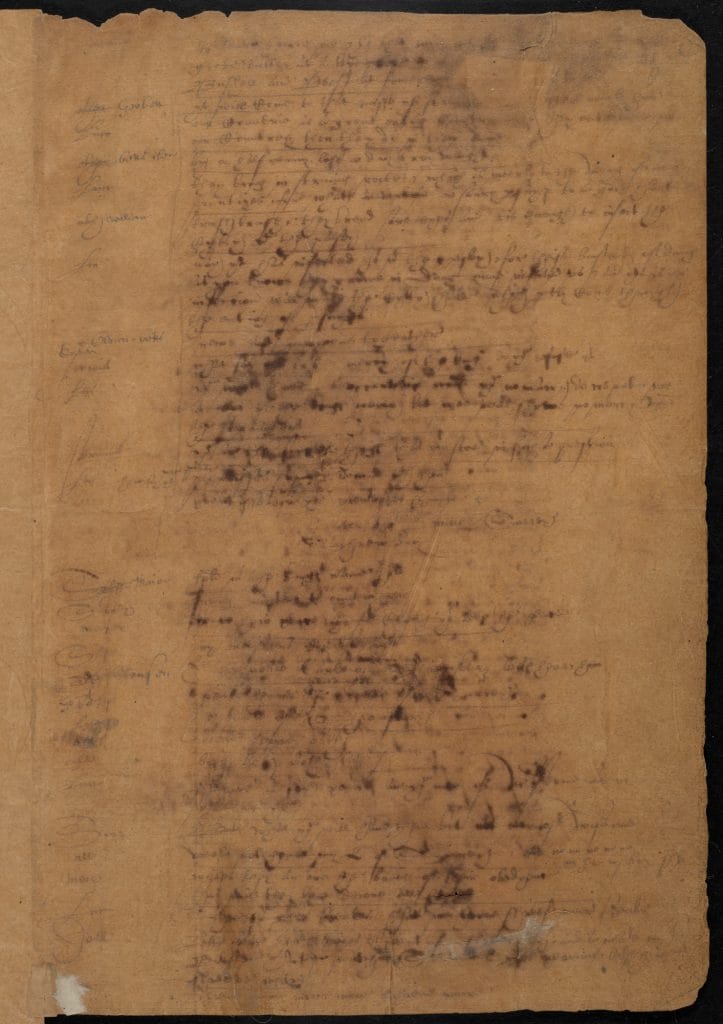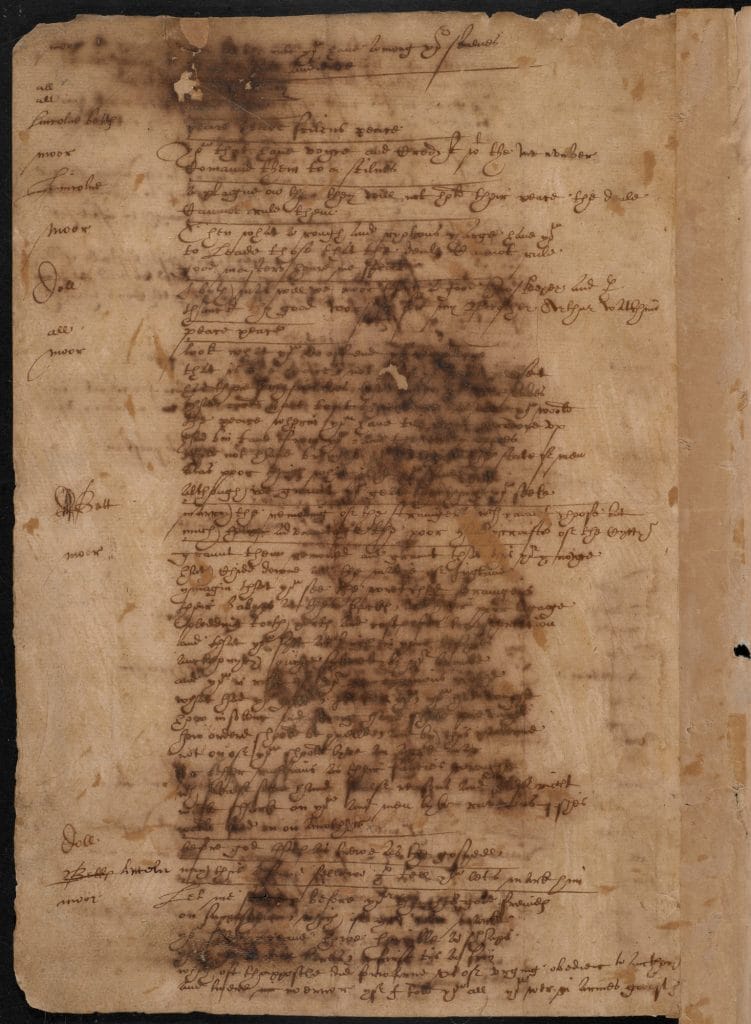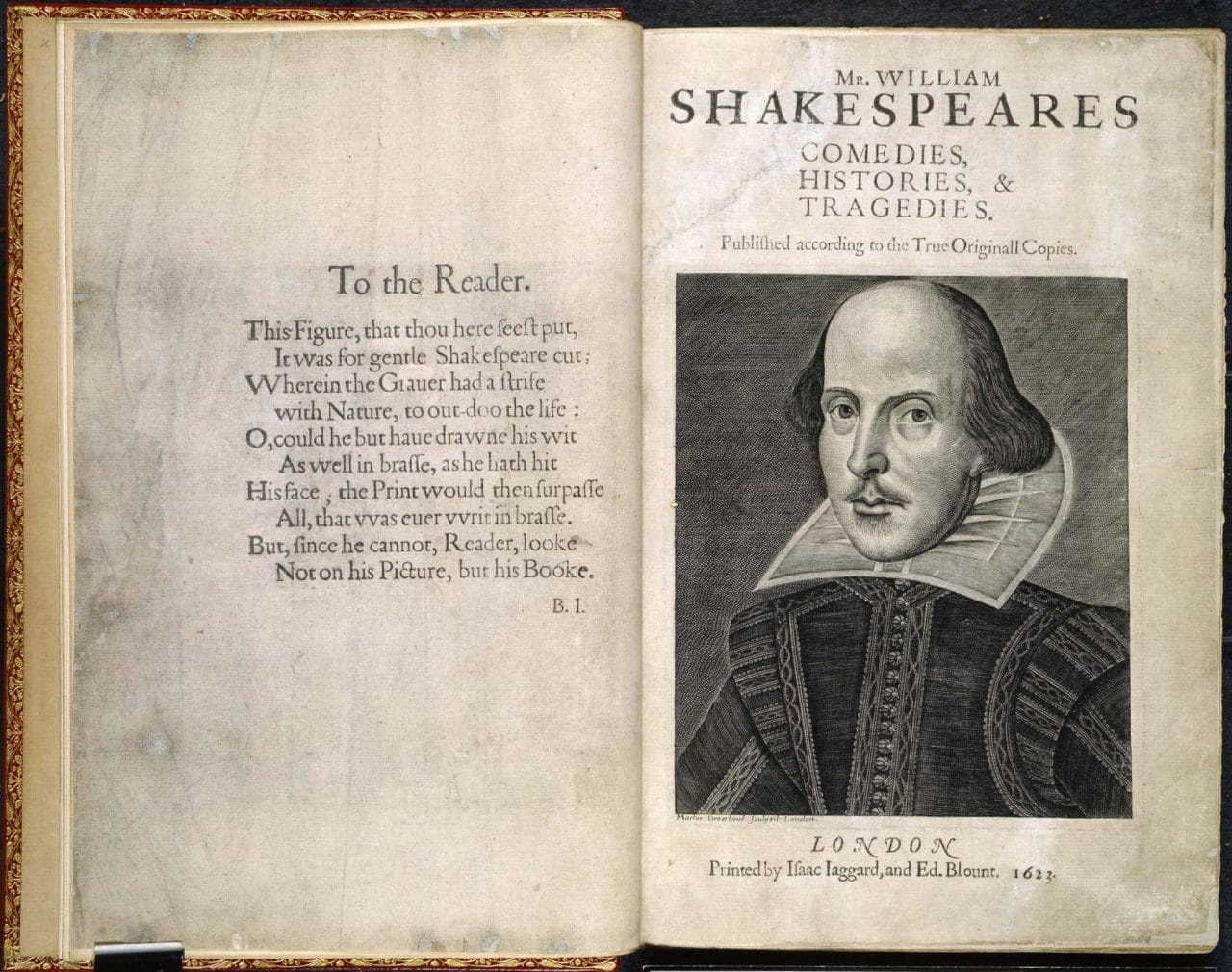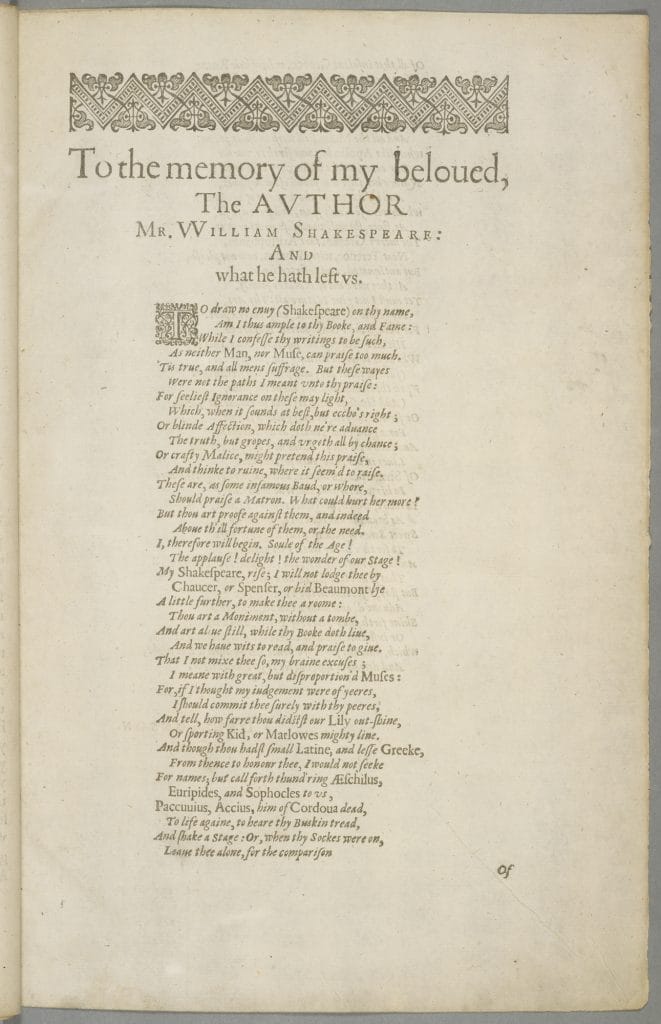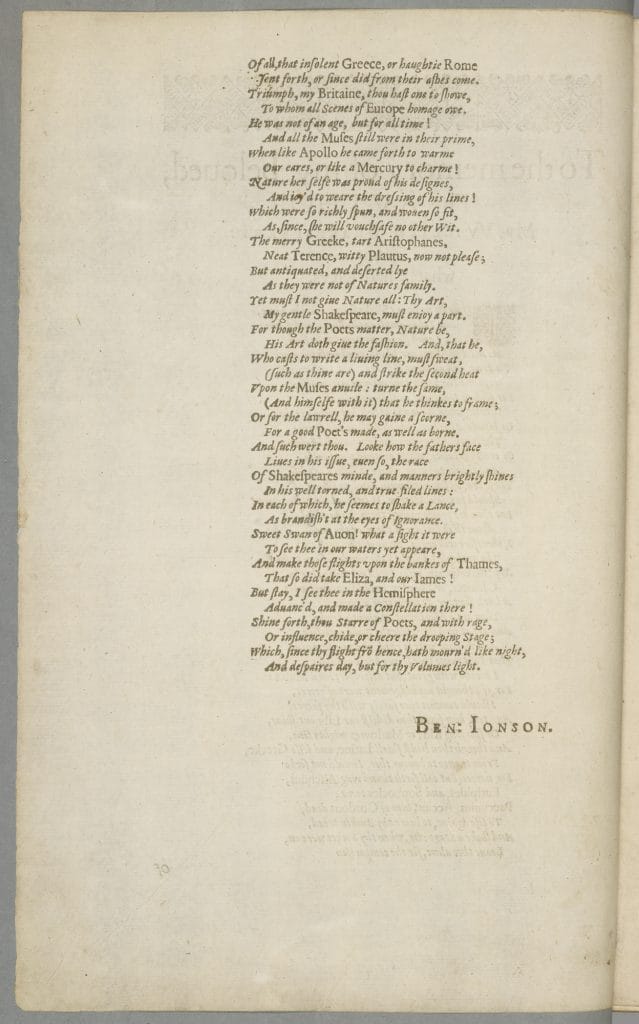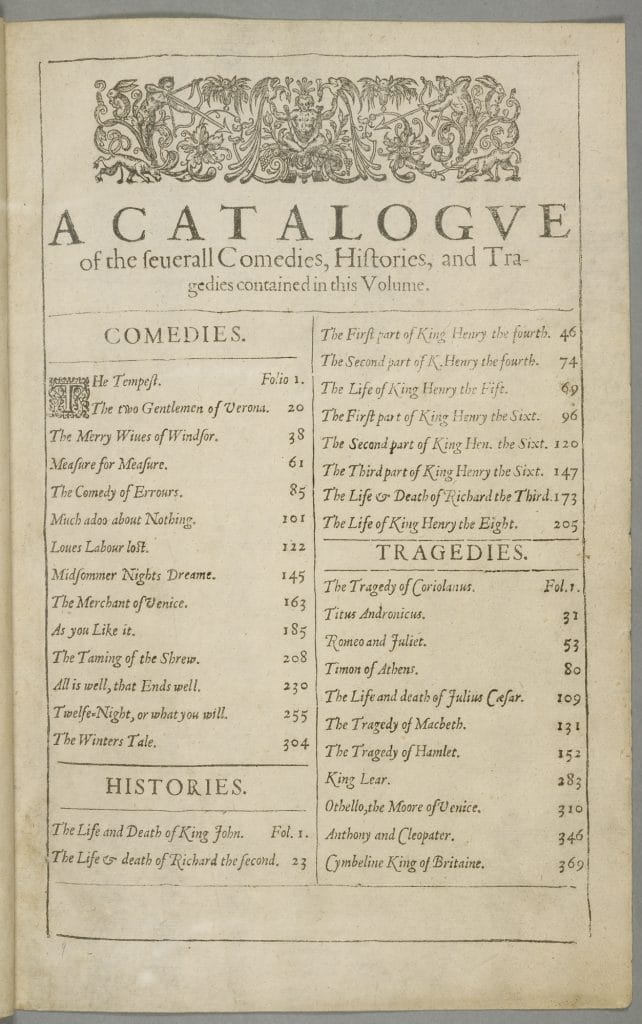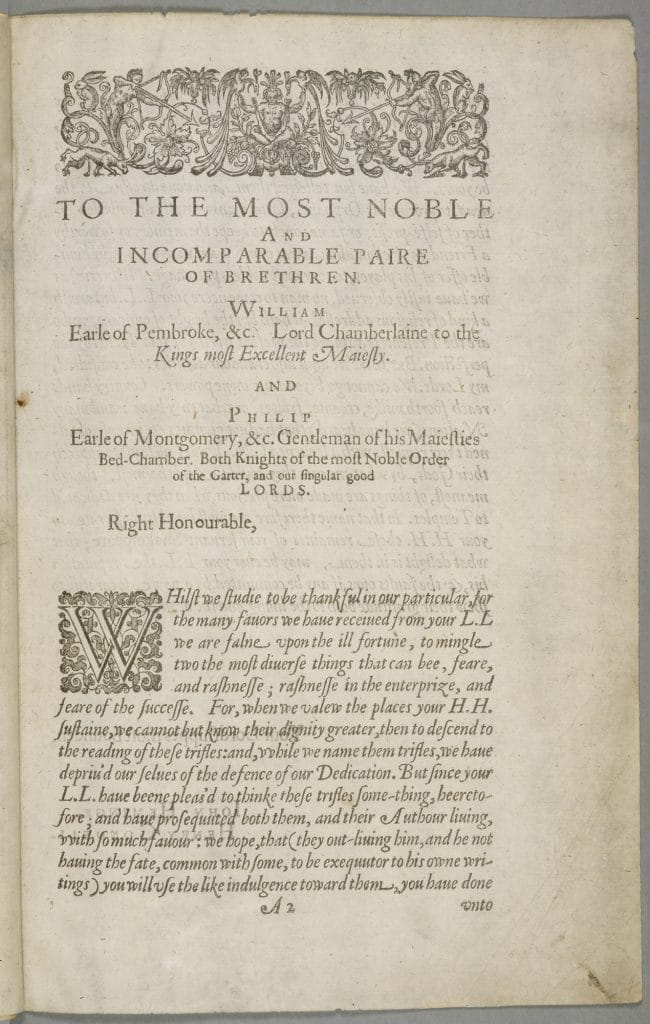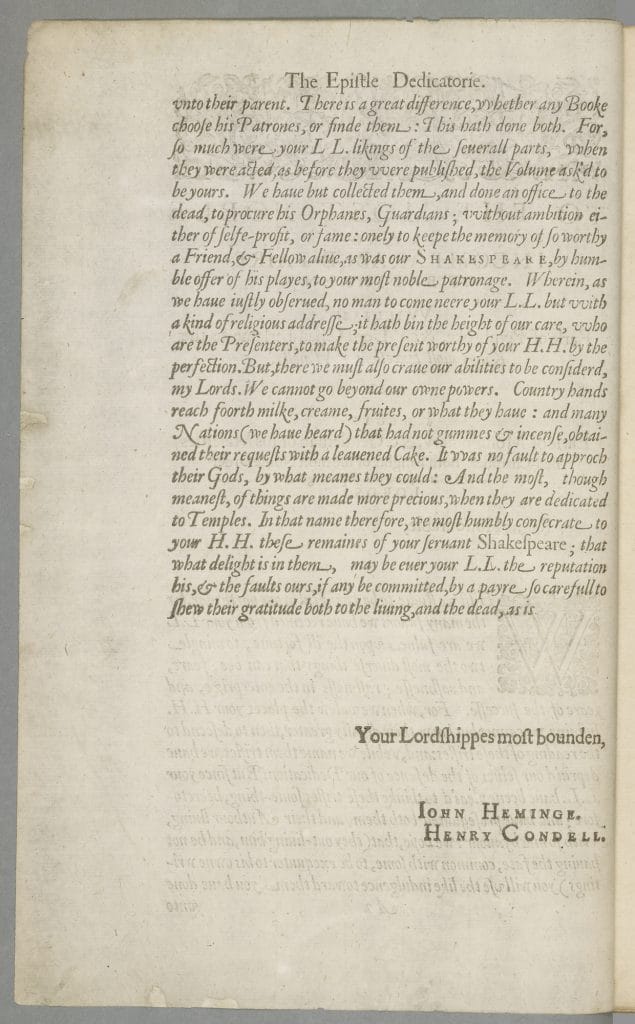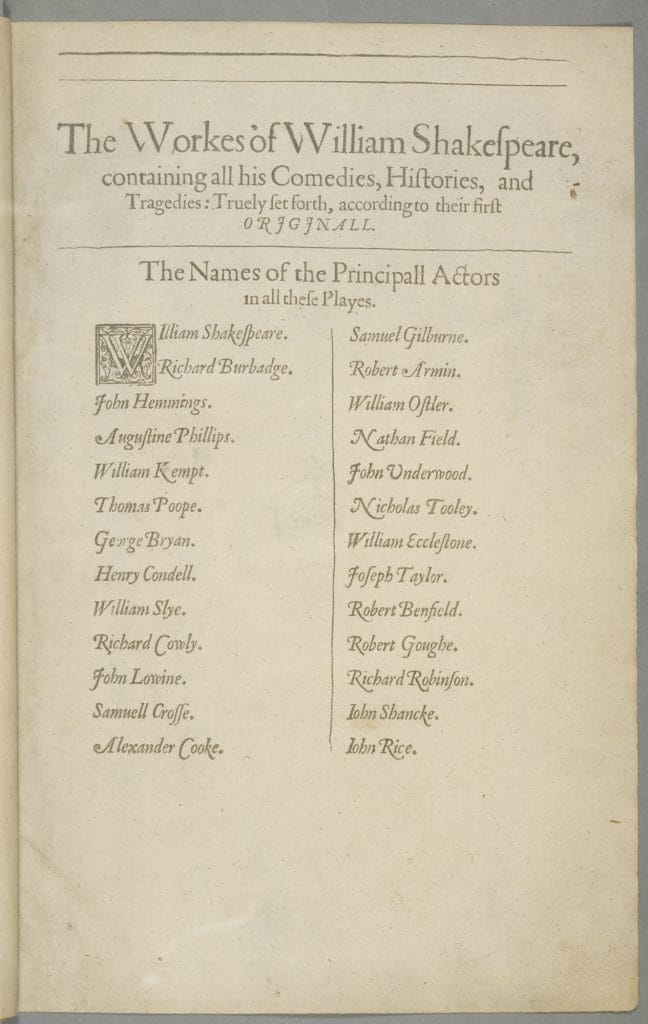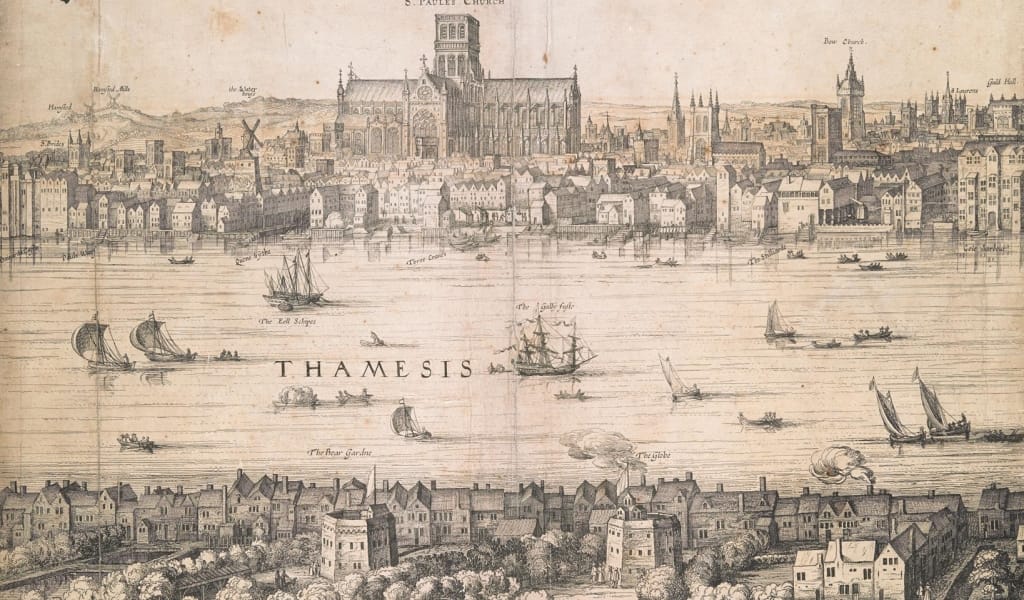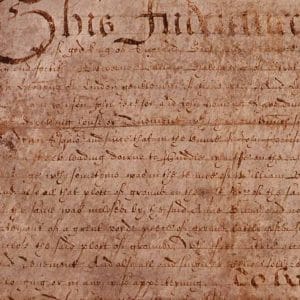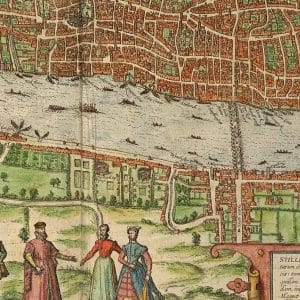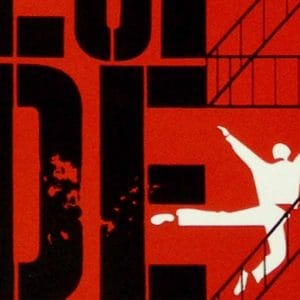
Shakespeare’s First Folio
出版日期: 1623
Compiled seven years after Shakespeare’s death, the First Folio, entitled Mr. William Shakespeare’s Comedies, Histories, & Tragedies, contains 36 plays. For over 400 years the versions of the plays recorded in the First Folio and the earlier, cheaply printed quarto editions have been used by actors and directors to return Shakespeare’s plays to the stage. Significantly, the First Folio ensured the survival of 18 plays that would otherwise have been lost, including As You Like It, Antony and Cleopatra, Macbeth, Julius Caesar, Twelfth Night and The Tempest.
Shakespeare’s life
Shakespeare was born on or around 23 April 1564 in Stratford-upon-Avon, the eldest son of John Shakespeare, a prosperous glover and local dignitary, and Mary Arden, the daughter of a wealthy farmer. There are no records of Shakespeare’s education, but he probably went to King’s New School – a reputable Stratford grammar school where he would have learned Latin, Greek, theology and rhetoric – and may have had a Catholic upbringing. He may also have seen plays performed by the travelling theatre groups touring Stratford in the 1560s and 70s. At age 18, William married Anne Hathaway, and the couple had three children over the next few years.
The first record of Shakespeare’s career as an actor and playwright in London is dated 1592, by which time he was reasonably well established. It is believed his London career began sometime between 1585 and 1592. By the time of his retirement in 1613 Shakespeare had written at least 37 plays, 36 of which are contained in the First Folio. Most of these plays were performed in the Globe, an open-air playhouse in London built on the south bank of the Thames in 1599. As none of Shakespeare’s original manuscripts survive (except, possibly, ‘Sir Thomas More’, which Shakespeare is believed to have revised a part of) we only know his work from printed editions.
Shakespeare’s quartos
Printing of Shakespeare’s plays began in 1594, probably with his tragedy Titus Andronicus. This appeared as a small, cheap pamphlet, called a quarto because of the way it was printed. Eighteen of Shakespeare’s plays had appeared in quarto editions by the time of his death in 1616. Another three plays were printed in quarto before 1642.
As only one literary manuscript fragment in Shakespeare’s hand survives, the earliest printed editions are our only source for what he actually wrote. The quarto editions are the texts closest to the time at which Shakespeare was writing. Some are thought to preserve either his working drafts (his so-called ‘foul papers’) or his fair copies. Others are thought to record versions remembered by actors who performed the plays, providing information about staging practices in Shakespeare’s day.
Shakespeare’s First Folio
The First Folio is the first collected edition of William Shakespeare’s plays, collated and published in 1623, seven years after his death. Folio editions were large and expensive books that were seen as prestige items.
Of the 36 plays in the First Folio, 17 were printed in Shakespeare’s lifetime in various good and bad quarto editions, one was printed after his death and 18 had not yet been printed at all. It is this fact that makes the First Folio so important; without it, 18 of Shakespeare’s plays might never have survived.
The text was collated by two of Shakespeare’s fellow actors and friends, John Heminges and Henry Condell, who edited it and supervised the printing. In order to produce as authoritative a text as possible, Heminge and Condell compiled it from the good quartos and from manuscripts (now lost) such as prompt books, authorial fair copy, and ‘foul papers’ (working drafts). The First Folio offered a corrective to what are now called bad quartos – spurious and corrupt pirate editions, likely based on lines memorised by players.
The portrait of Shakespeare on the title page was engraved by Martin Droeshout and is one of only two portraits with any claim to authenticity. As Droeshout would have only been 15 when Shakespeare died it is unlikely that they actually met. Instead his picture was probably drawn from the memory of others, or from an earlier portrait. The writer Ben Jonson’s admiring introduction to the First Folio, seen in the title page image, declared in verse that the engraver had achieved a good likeness.
Was Shakespeare successful in his lifetime?
By 1592, Shakespeare was well known enough as a writer and actor to be criticised by jealous rival Robert Greene as an ‘upstart crow’ and ‘Johannes Factotum’ (a ‘Johnny do-it-all’) in his pamphlet Groats-worth of Wit (a groat being a small coin). Although it is difficult to determine the chronology of Shakespeare’s works, it is likely that by 1592 he had authored 11 plays, including Romeo and Juliet, Richard III and A Midsummer Night’s Dream. His plays were successful: the box office takings from the first performance of Henry VI, Part 1 at the Rose in 1592 were £3 16s. 8d., the highest recorded for the season.
For much of the period from September 1592 to June 1594, the London playhouses were shut because of the plague. Shakespeare published two epic poems during this time, Venus and Adonis and The Rape of Lucrece.
Shakespeare’s success grew through the 1590s. He joined and became a shareholder of the Lord Chamberlain’s Men who performed before Queen Elizabeth on numerous occasions, and as well as writing more plays, he published several poems and circulated his sonnet sequence in manuscript. His successes enabled him in 1597 to buy New Place, the second largest house in Stratford. This success was not untainted by tragedy, however: in 1596 his 11-year-old son Hamnet, died.
Where were Shakespeare’s plays performed?
In 1599, Shakespeare’s company, the Lord Chamberlain’s Men, took up residence in the newly built Globe Theatre. Julius Caesar was one of the first plays performed there. Performances at the Globe were divided into three seasons with breaks around Christmas when the players performed at court; Lent, when playing was intermittent; and summer, when the players toured the provinces escaping the infection and infestation of the city which tended to strike in the warmer months.
When Queen Elizabeth died in 1603, her successor, King James I, announced that the Lord Chamberlain’s Men would now be the King’s Men. This patronage was a huge coup for the troupe, but Shakespeare was by no means a puppet playwright and he continued to write plays that posed difficult questions about kingship. The Jacobean works of 1604–08 were darker and include the mature tragedies Othello, King Lear and Macbeth.
In 1608 the King’s Men took on a second theatre, a candlelit indoor venue at Blackfriars; the expensive seats catered to a more elite audience and the lighting may have influenced the atmosphere of late plays such as The Tempest.
In 1613 the Globe burned down, and the same year Shakespeare retired from the London theatre world and returned to Stratford. He died on 23 April 1616 and was buried in Holy Trinity Church, where he had been baptised 52 years earlier.
